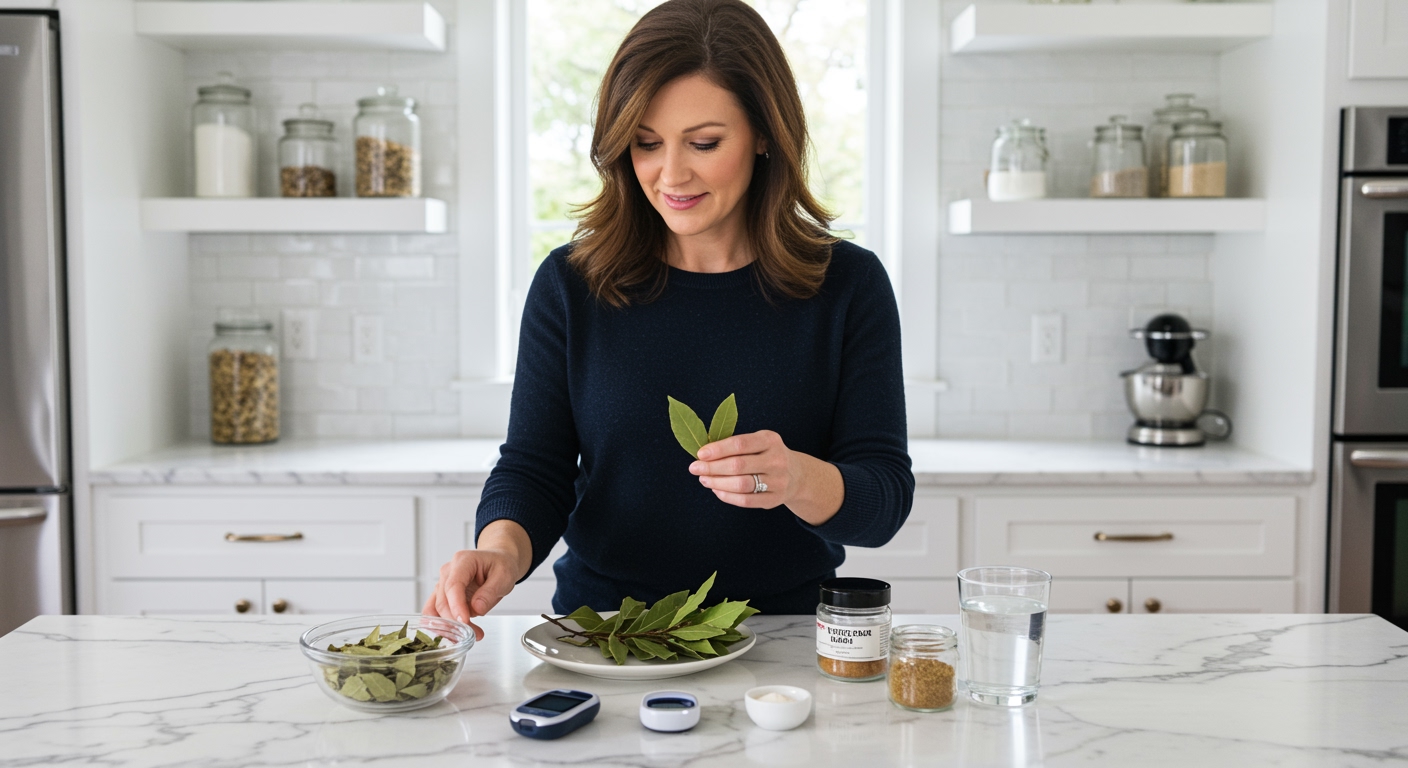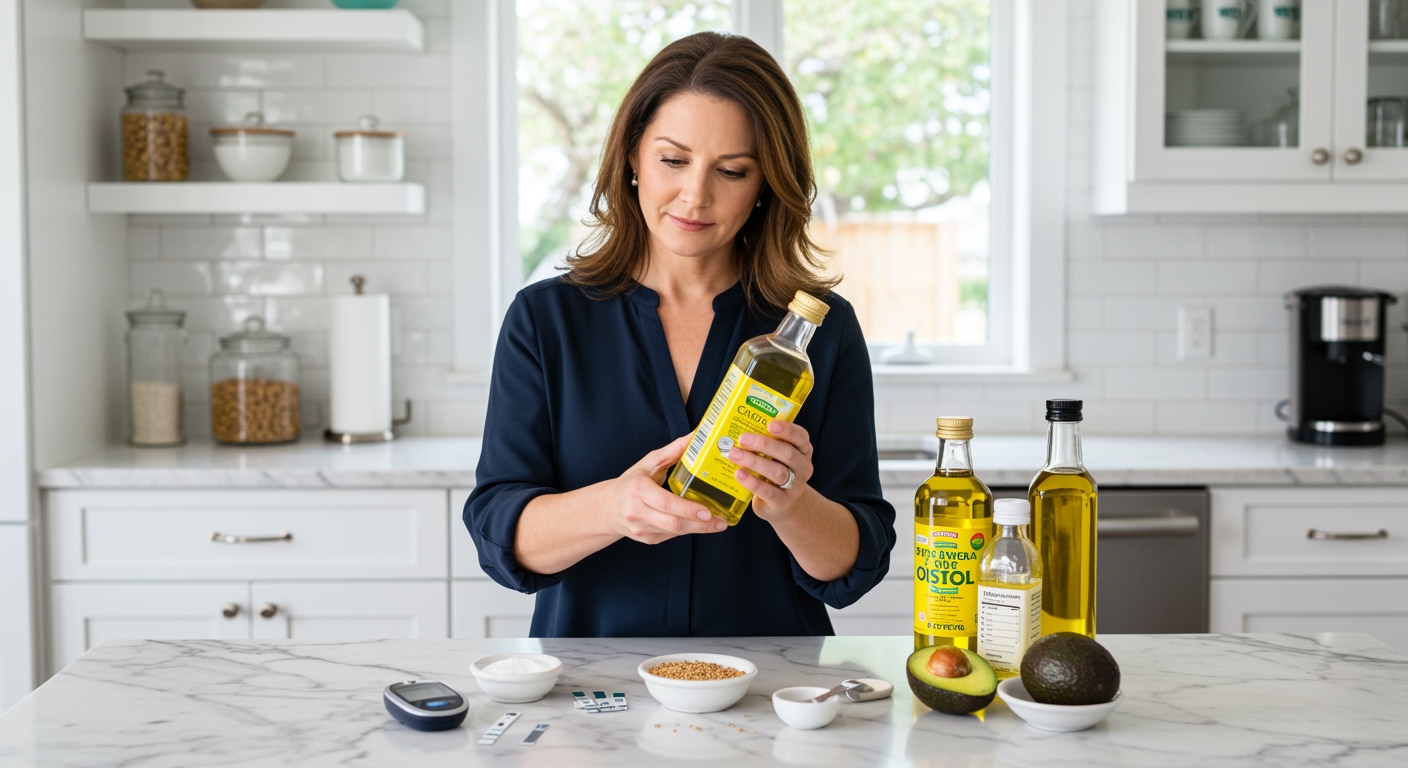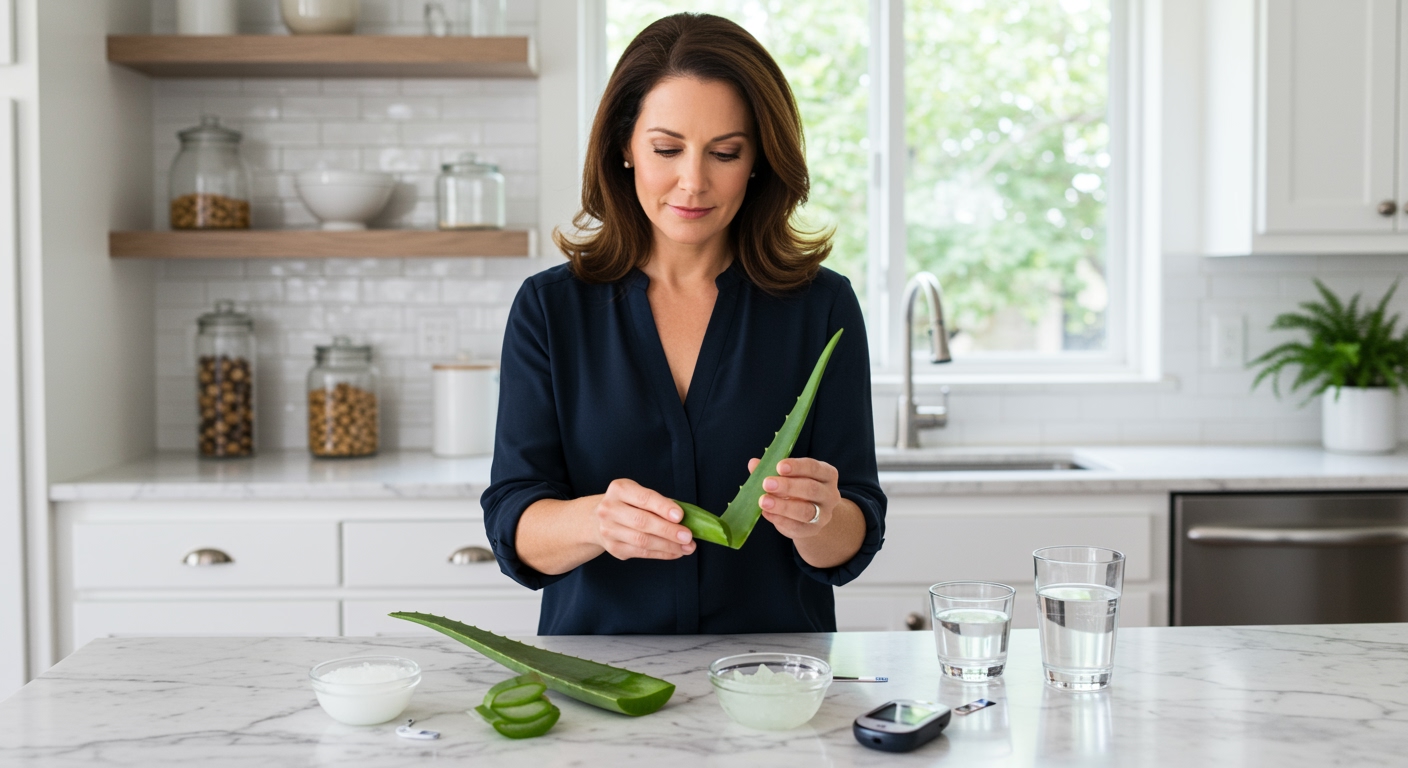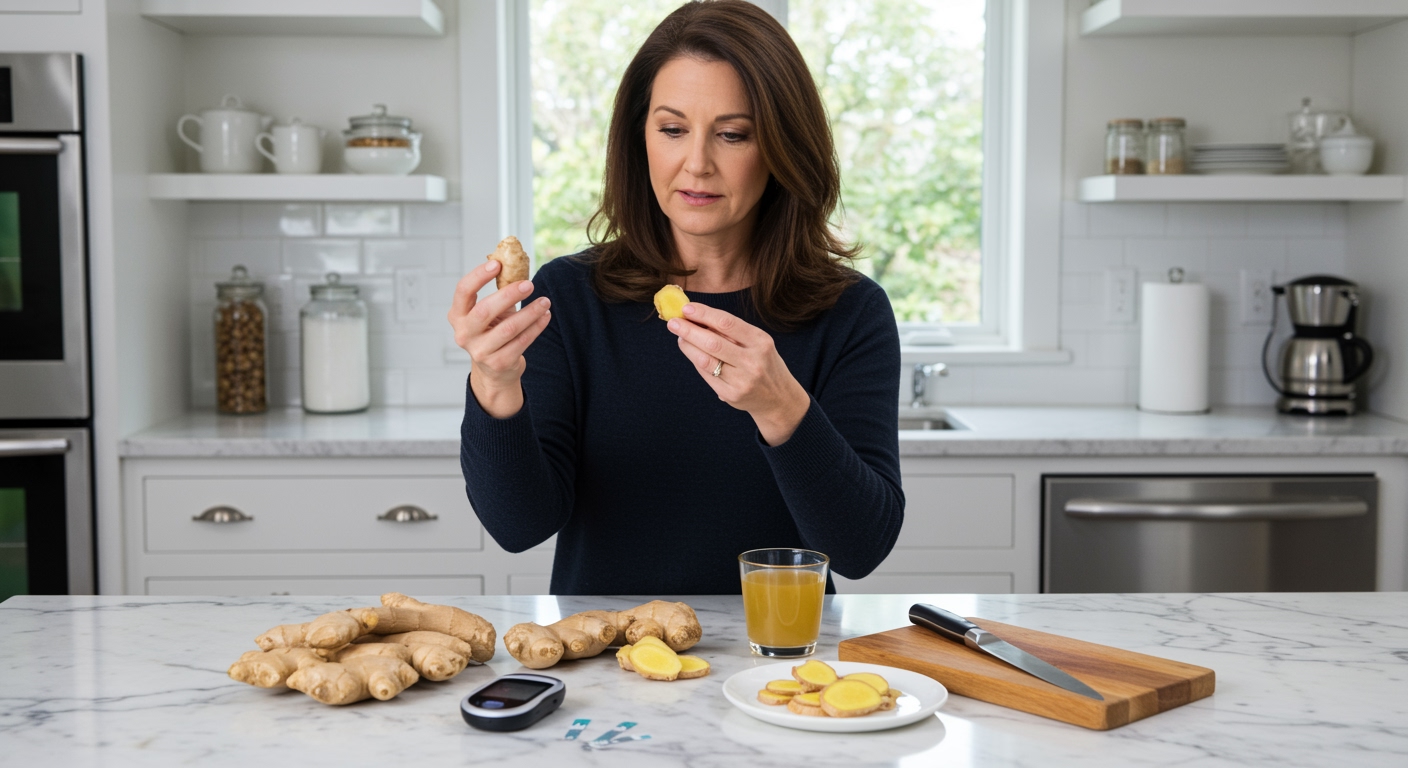✪ Key Takeaway: Bay leaves may help lower blood sugar levels, but current evidence is limited and more research is needed.
Introduction
You reach for bay leaves to flavor your soup, but could this common kitchen herb actually help manage your blood sugar levels?
Many people with diabetes are searching for natural ways to support their blood sugar control alongside their prescribed medications.
Hi, I’m Abdur, your nutrition coach, and today I’m going to explain whether bay leaves can truly benefit people with diabetes and what the science actually tells us.
What Makes Bay Leaves Special For Blood Sugar?
Bay leaves contain several bioactive compounds that researchers believe might influence blood sugar levels.
The most important compounds include polyphenols, flavonoids, and essential oils that have shown antioxidant properties in laboratory studies.
These compounds work by potentially improving how your body processes glucose and responds to insulin.
Insulin is the hormone that helps move sugar from your bloodstream into your cells where it can be used for energy.
When your body becomes resistant to insulin or cannot produce enough of it, blood sugar levels rise, leading to diabetes.
Some studies suggest that bay leaf compounds might help your cells become more sensitive to insulin, though this research is still in early stages.
✪ Fact: Bay leaves have been used in traditional medicine for centuries across different cultures.
What Does The Research Actually Show?
The scientific evidence for bay leaves and diabetes is limited but shows some promising early results.
A small study published in the Journal of Clinical Biochemistry and Nutrition found that people with type 2 diabetes who consumed bay leaf capsules showed improvements in their blood sugar levels.
Participants took 1-3 grams of ground bay leaves daily for 30 days and experienced reductions in both fasting blood glucose and cholesterol levels.
However, this study involved only 40 people, which makes it difficult to draw definitive conclusions about bay leaves for the general population.
Animal studies have shown more consistent results, with bay leaf extracts helping to lower blood sugar in diabetic rats and mice.
These studies suggest that bay leaves might work by slowing down the absorption of carbohydrates in your digestive system and improving insulin function.
Still, what works in animals does not always translate to the same effects in humans, so we need more human trials to be certain.
✪ Note: Most studies used bay leaf powder or extracts rather than whole leaves in cooking.
How Should You Use Bay Leaves For Diabetes?
If you want to try bay leaves as part of your diabetes management plan, there are several practical ways to include them in your routine.
The most common method is making bay leaf tea by steeping 2-3 dried leaves in hot water for 10-15 minutes.
You can drink this tea once or twice daily, preferably before meals to potentially help with blood sugar control after eating.
Another option is grinding dried bay leaves into a powder and adding small amounts to your food throughout the day.
Start with just a pinch (about 1/4 teaspoon) and gradually increase to no more than 1-2 grams daily, as used in the research studies.
You can also continue using whole bay leaves in your cooking, though this method provides smaller amounts of the active compounds compared to tea or powder.
Remember that bay leaves should complement, not replace, your prescribed diabetes medications and healthy lifestyle habits.
✪ Pro Tip: Always remove whole bay leaves from food before eating as they can be sharp and cause choking.
Are There Any Risks Or Side Effects?
Bay leaves are generally safe for most people when used in normal cooking amounts or as tea.
However, consuming large quantities of bay leaf powder or extracts might cause stomach upset, nausea, or digestive issues in some individuals.
People taking diabetes medications should be particularly careful because bay leaves might enhance the blood sugar-lowering effects of these drugs.
This combination could potentially lead to hypoglycemia, which is when your blood sugar drops too low and becomes dangerous.
If you experience symptoms like dizziness, sweating, confusion, or rapid heartbeat after using bay leaves, check your blood sugar immediately and contact your healthcare provider.
Pregnant and breastfeeding women should avoid using bay leaves in medicinal amounts, as there is not enough research to confirm safety during these periods.
Always talk to your doctor before adding bay leaves to your diabetes management routine, especially if you take insulin or other blood sugar-lowering medications.
✪ Note: Monitor your blood sugar more frequently when first trying bay leaves to track any changes.
The Bottom Line
Bay leaves show promise for helping with blood sugar control, but the current evidence is not strong enough to consider them a proven diabetes treatment.
Small steps with natural foods can support your health journey, but they work best alongside proven medical treatments.
I would love to hear about your experiences with bay leaves or any questions you might have about natural approaches to diabetes management in the comments below.
References
At NutritionCrown, we use quality and credible sources to ensure our content is accurate and trustworthy. Below are the sources referenced in creating this article:
- PMC: Bay leaf effects on glucose metabolism
- PubMed: Clinical study on bay leaves and diabetes
- FASEB Journal: Bay leaf bioactive compounds research
- WebMD: Bay leaf health benefits





